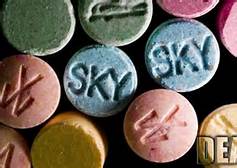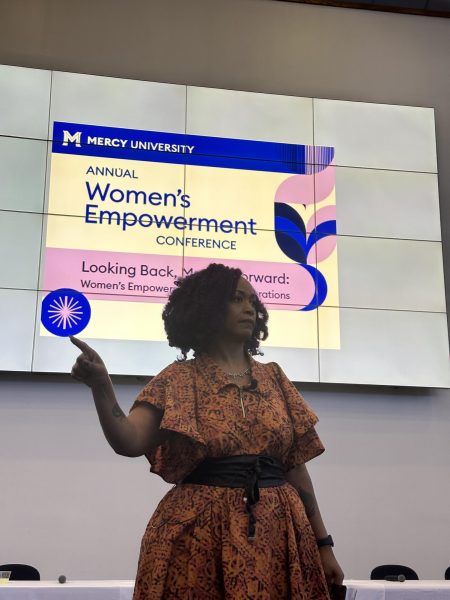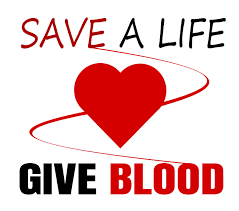Dangerous ‘Molly’ Usage Growing On College Campuses

I can’t find Molly, Molly, Molly, Molly.
She is the brand new and regularly used drug amongst college students, which has caused growing concern amongst government agencies.
Over the last few years, Molly has “flooded” the market, said Rusty Payne, a spokesman with the Drug Enforcement Administration. In some states, there has been a 100-fold increase – the combined number of arrests, seizures, emergency room mentions and overdoses – between 2009 and 2012, according to DEA.
The DEA comes to a disputes the claim that Molly is a pure version of cocaine, because “there is nothing pure or organic about it,” said David Dongilli of the DEA.
Molly or MDMA, or 3,4-methylenedioxy-N-methylamphetamine isn’t as new as everyone thinks it is. It was patented by Merck pharmaceuticals in 1914 and did not reach the news until the 70s, when psychotherapists began giving it to patients to get them to open up. It arrived at New York nightclubs in the late 1980s, and by the early ’90s it became the preferred drug at raves.
***
MDMA was first synthesized in 1914 by Merck chemist Anton Köllisch. At the time, Merck was interested in developing substances that stopped abnormal bleeding. Before MDMA became a club drug, it was being studied to become a breakthrough in science with helping people. It was first created as a diet drug and in 1970s was used by doctors as an aid in psychotherapy. In the 1980s and 1990s it burst upon the club scene as a party drug.
In the late 1980s, MDMA began to be widely used in the UK and other parts of Europe, becoming an integral element of rave culture and other psychedelic-influenced music scenes. Spreading along with rave culture, illicit MDMA use became increasingly widespread among young adults in universities and later in high schools. MDMA became one of the four most widely used illicit drugs in the U.S., along with cocaine, heroin, and cannabis.
Molly is now known for having a psychedelic effect on people which is why it is taken at raves and parties. According to Pax Prentiss, co-founder and CEO of Passages rehabilitation centers in Southern California, molly users tend to be ages 16 to 24 which is the perfect age gap for college students.
***
In the United States, MDMA was legal and unregulated until May 31, 1985, which is when it was emergency scheduled to DEA Schedule I, for drugs deemed to have no medical uses and a high potential for abuse.
During DEA hearings to schedule MDMA, most experts recommended DEA Schedule III prescription status for the drug, due to beneficial usage of MDMA in psychotherapy. The Administrative Law Judge overseeing the hearings, Francis Young, also recommended that MDMA be placed in Schedule III. The DEA however classified MDMA as Schedule I. The Drug Enforcement Administration (DEA) considers MDMA to be a Schedule I controlled substance, which means it has a high potential for abuse, and no accepted use in medical treatment.
The DEA notes that MDMA can cause confusion, anxiety, depression, paranoia, sleep problems, and drug craving. The drug also can cause muscle tension, tremors, involuntary teeth clenching, muscle cramps, nausea, faintness, chills, sweating, and blurred vision.
“High doses of MDMA can interfere with the ability to regulate body temperature, resulting in a sharp increase in body temperature (hyperthermia), leading to liver, kidney and cardiovascular failure. Severe dehydration can result from the combination of the drug’s effects and the crowded and hot conditions in which the drug is often taken,” the DEA reports.
What is in MDMA that makes it so bad for the body?
Easily broken down and explained, the more common usage of “Molly” applies to the pure form of MDMA, which is used to create Ecstasy. MDMA acts as a releasing agent of serotonin, norepinephrine, and dopamine. It enters neurons via carriage by the monoamine transporters. Once inside, MDMA inhibits the vesicular monoamine transporter, which results in increased concentrations of serotonin, norepinephrine, and dopamine in the cytoplasm, and induces their release by reversing their respective transporters through a process known as phosphorylation.
With all these technical terms, Molly seems horrible for a person, but simply explained, Molly released agents such a dopamine in your neurons which enters transporters in your brain and in result increases dopamine in your cytoplasm. Molly can be taken in pill form or in powered form to sniff.
The United Nations Office on Drugs and Crime claimed in its 2008 World Drug Report that U.S. retail prices are $20 to $25 per tablet, or from $3 to $10 per tablet if bought in batches. Molly has a strongly addictive formula in it which is why its become a difficult habit to kick.
While students have heard of it, some are not exactly sure what it is, like Jon Portilla, a 21 year old senior, who believed that it contained the drug meth.
“I don’t know, man. I’ve only taken it once. I was at Ezoo, which is a music festival, and I felt very loose and I felt good. I felt free.”
He began to explain the after effects, “When it wore off, I felt hungry, tired, exhausted. I would never take it again. I would rather drink, which isn’t good for me, but it’s better than Molly I think.”
Effects reported by some users once the acute effects of MDMA have worn off include: anxiety and paranoia, depression, irritability, fatigue, impaired attention, focus, and concentration, as well as drive and motivation (due to depleted serotonin levels). Other side effects include dizziness, lightheadedness, or vertigo, loss of appetite, gastrointestinal disturbances, such as diarrhea or constipation, insomnia, aches and pains, usually from excessive physical activity (e.g., dancing) and exhaustion.
Molly can be compared to the new popular girl on a college campus. But instead of Molly being a girl, she is a dangerous drug that can be easily overdosed.
“I know someone who has overdosed on Molly and died, and that is why I won’t ever do it again,” said Portilla.
This isn’t the first time that Molly has done deadly damage to people and ended their lives.
The music festival E-Zoo is an example of a time when people overdosed on Molly. The second day of E-Zoo was actually cancelled because several people died the previous day because they were on the drug. This dangerous substance seems to become very popular in different aspects.
In the New York concert deaths, the medical examiner found lethal mixtures of MDMA and methylone, a synthetic stimulant, the DEA said.
Molly seems to be so popular at music festivals as well as clubs and raves, but she seems to also be well known in music itself.
Madonna named an album with a similar-sounding name — “M-D-N-A” — and was judged by a question she asked the audience during a show last year in Miami, Florida: “How many people in this crowd have seen Molly?”
While Ecstasy was never very popular among the hip-hop music set, Molly seems to have caught on. Kanye West has rapped about it and rapper Rick Ross apparently even lost an endorsement after he referenced the drug in lyrics.
Most recently, the producers of the MTV Video Music Awards on Aug. 25 bleeped a part of Miley Cyrus’ single, “We Can’t Stop,” when she sang the line, “Dancing with Molly.”
“I was only introduced to Molly because of music,” said Jackii Newman, junior at Mercy College. “I heard a song that said ‘pop a Molly, I’m sweating’ and I was confused so looked up what it was. I can’t believe it is that popular around college campuses but thankfully I haven’t done Molly.”
Elizabeth Rjedkin, a senior at Mercy College, had a similar reaction.
“Yes, I have heard of Molly, but I would never take it,” said Rjedkin. “I don’t like to put foreign things into my body especially if I don’t know what is in it. I know people who have tried it and they have told me stories from people dying.”
While some people take Molly as a laughing matter, other people take it very seriously. A huge difference that is seen in the crowd of Molly-takers would be a different age gap.
A 37 year old biology major, Mark White, had no clue what Molly was.
“I didn’t know what the drug Molly was before you mentioned it,” said White. “I experimented with drugs in high school and have learned the hard way, which is why I would never try Molly, but I do know what Ecstasy is, and I used to hang out with a bunch of people who have taken it. I have never taken it but I am aware what it is.”
A survey of 100 students was conducted in Mercy College and questions such as “Do you know what Molly is?” “Would you ever take Molly?” and “Have you ever taken Molly?” were asked.
In total, about 75 percent of participants fell into the range of 18 to 25 and they agree that they have heard what Molly is and 50 percent of those participants have actually tried Molly. While some said that they wouldn’t ever do it again, plenty of others said that they would do it again and still do it.
The older participants that range from ages 30 and older either know what molly is but have never considered trying it or don’t know what molly is at all. The age difference is a major factor in a study such as this.
One person in particular, who would prefer to stay anonymous said that she started to do Molly three years ago and it has been a great experience thus far. She said that Molly helped her through a lot of personal and family problems that she has, but she later hinted that she is on the brink of dropping out of school.
“Sally” said her will and want to move forward is slowly diminishing. She stated she wants to drop out of school because she doesn’t have time to work, also alluding to the fact that she doesn’t have money for her addiction.
Yet she claims that she doesn’t have one.
“Molly isn’t an addiction,” she says. “I just can’t go a week without it, but I could stop whenever I want to.”
When asked to stop today, she simply shook her head and said “No. Tomorrow.”

Erminia Errante is FINALLY A SENIOR with an English Education major and a journalism minor. Living in Brooklyn, she has a passion for writing and loves...













